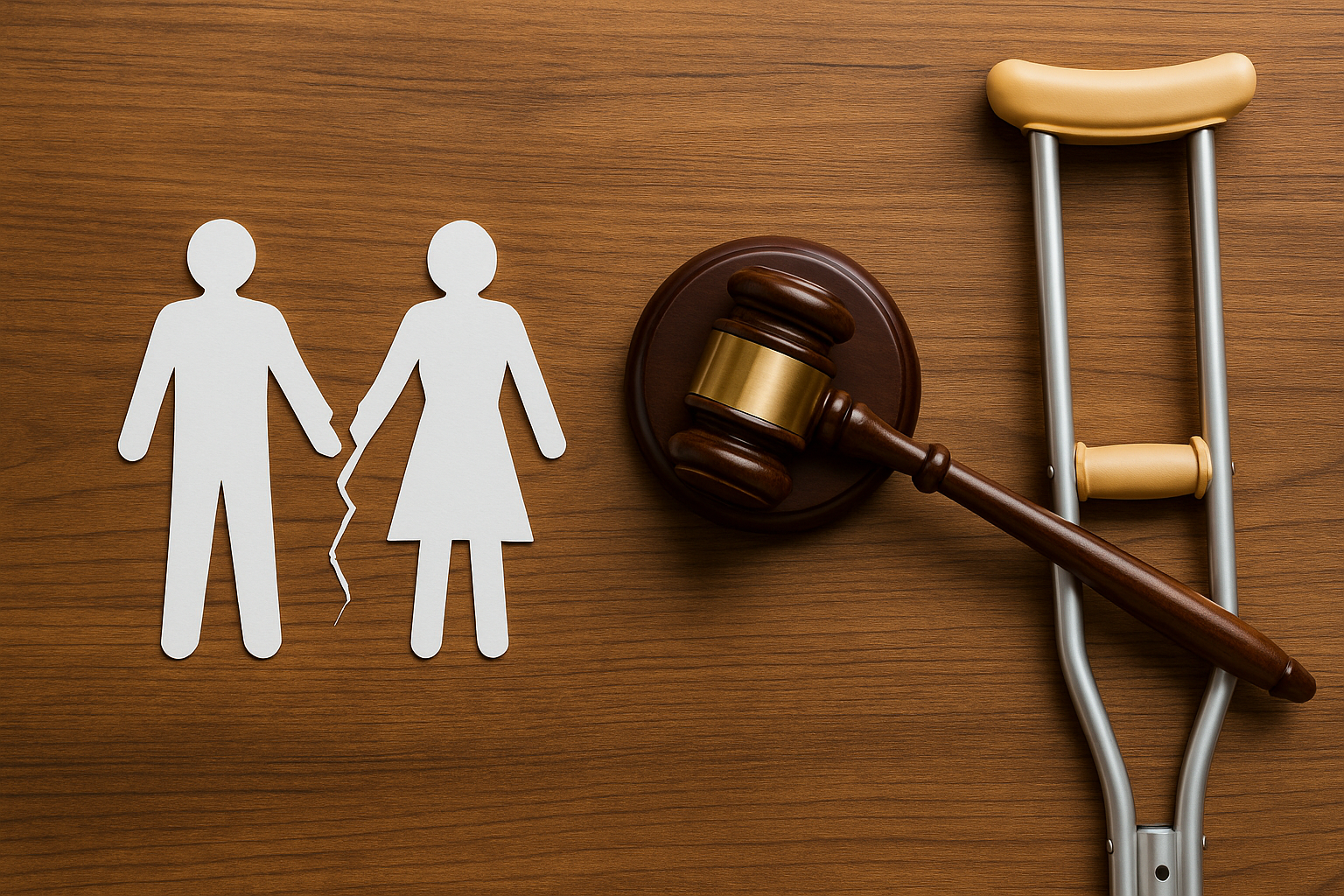When one partner suffers a serious injury, the impact extends beyond medical bills or lost wages. It can deeply affect the relationship between spouses or domestic partners. In California, this emotional and relational harm is known as loss of consortium. Understanding how this claim works can help families seek the justice they deserve.
What does loss of consortium mean?
Loss of consortium refers to the emotional, physical, and companionship losses experienced by the uninjured spouse or partner when an accident severely injures their loved one. It acknowledges the strain injuries place on a marriage or domestic partnership.
In California, this legal claim recognizes damages such as loss of affection, moral support, comfort, companionship, and intimacy. It is a derivative claim, meaning it depends on the success of the injured person’s main injury case.
Who can file a loss of consortium claim in California?
Only a legally married spouse or registered domestic partner may file a loss of consortium claim in California. The law limits eligibility to protect legitimate domestic relationships and avoid overlapping damages.
Unmarried partners, children, and other family members typically cannot bring this claim. However, they may still pursue other emotional distress or wrongful death damages depending on the circumstances of the case.
Types of injuries that lead to loss of consortium claims
Loss of consortium often arises from severe or life-changing injuries. These injuries affect the victim’s ability to provide emotional support or maintain a normal relationship with their spouse. Common examples include:
- Spinal cord injuries causing paralysis
- Traumatic brain injuries leading to cognitive or personality changes
- Severe burns resulting in disfigurement
- Amputations or permanent disabilities
- Chronic pain or loss of sexual function
These physical and psychological changes can drastically alter a couple’s relationship, creating grounds for a consortium claim.
How is loss of consortium proven in court?
To succeed, the spouse must show that the injury directly caused a measurable loss in companionship or intimacy. Evidence often includes testimony, medical records, psychological evaluations, and personal accounts detailing how the relationship changed after the incident.
Courts also look at the couple’s relationship history before the injury. A strong, stable marriage before the accident often strengthens the claim by showing a noticeable decline in affection or support afterward.
Damages that can be recovered in a loss of consortium claim
Loss of consortium damages are non-economic. They do not have a set dollar value and are meant to compensate for emotional and relational harm. Common categories include:
| Type of Damage | Description | Example |
|---|---|---|
| Emotional support | Loss of love, care, and empathy | Feeling isolated after injury |
| Companionship | Reduced shared activities or affection | Inability to enjoy family life |
| Intimacy | Loss of sexual relationship | Physical inability or emotional distance |
Each case is unique. The court or jury determines the value based on testimony and the extent of the injured partner’s suffering.
How does California law treat loss of consortium?
Under California Civil Jury Instruction (CACI) No. 3920, loss of consortium damages must be proven by showing that the spouse suffered real, non-speculative harm due to the injury. The amount awarded must be fair and reasonable, reflecting the impact on the marriage.
Because it is a derivative claim, if the injured spouse loses their main injury case, the loss of consortium claim also fails. However, if the primary injury claim succeeds, the spouse may receive compensation alongside other damages.
Factors that influence the value of a consortium claim
Several factors can affect the potential value of a loss of consortium case, including:
- Severity of the injury: Permanent or catastrophic injuries often result in higher awards.
- Duration of the impact: Temporary injuries may reduce the compensation amount.
- Relationship history: A long, stable marriage can strengthen the claim.
- Evidence and testimony: Statements from friends, doctors, and therapists can help validate emotional suffering.
- Comparative negligence: If the injured spouse was partly at fault, compensation may be reduced.
Can same-sex couples file for loss of consortium?
Yes. California recognizes registered domestic partnerships and same-sex marriages equally under the law. Same-sex spouses have the same right to pursue loss of consortium damages as heterosexual couples.
The key requirement is that the partnership must be legally recognized at the time of the injury. Unregistered relationships, even if long-term, are not eligible for this specific type of claim.
How long do you have to file a loss of consortium claim in California?
Loss of consortium claims must generally follow the same statute of limitations as the underlying personal injury case—two years from the date of injury. Missing this deadline can prevent the spouse from recovering compensation altogether.
It is important to act quickly, as building a strong case requires gathering medical records, witness statements, and expert evaluations that take time to prepare.
Common challenges in proving loss of consortium
Loss of consortium claims can be difficult because emotional harm is subjective. Defense attorneys often argue that the couple’s relationship issues pre-dated the injury or that emotional strain is temporary. This makes clear, credible evidence crucial.
Strong documentation—such as counseling records or testimony from loved ones—can demonstrate the real impact of the injury on the marriage and help the claim succeed.
Loss of consortium vs. emotional distress
Loss of consortium focuses on harm to the relationship between spouses. Emotional distress, on the other hand, compensates the injured individual directly for their own mental suffering. Both may occur in the same case but serve distinct purposes.
For example, if an accident leaves one spouse paralyzed, that person may claim emotional distress, while their partner may claim loss of consortium for the changed relationship dynamic.
Loss of consortium vs. wrongful death claims
Loss of consortium applies when the injured spouse survives, while wrongful death applies if the injury proves fatal.
| Aspect | Loss of Consortium | Wrongful Death |
|---|---|---|
| Nature | Emotional and relational loss due to injury | Compensation after death |
| Who files | Living spouse or domestic partner | Heirs or dependents |
| Dependency | Derivative of injury claim | Independent legal action |
Learn More: Wrongful Death Claims: What Families Need to Know
A partnership that stands with you
An experienced California personal injury attorney can help spouses identify and document emotional and relational losses, calculate fair compensation, and ensure that the claim is filed correctly. They can also coordinate both the primary injury claim and the derivative consortium claim to maximize recovery.
At Knapp Moss, our attorneys understand that emotional suffering deserves the same attention as physical pain. We help couples navigate the complexities of California injury law with care and precision.
Contact our firm today for a free consultation.
Frequently Asked Questions
A spouse who can no longer share intimacy or companionship after a severe injury may claim loss of consortium for those relational damages.
No. Only legally married spouses or registered domestic partners are eligible to file for loss of consortium damages under California law.
There is no fixed amount. Compensation depends on the severity of the injury, its duration, and how deeply it impacts the relationship.
No. Pain and suffering compensate the injured person for physical and emotional harm, while loss of consortium compensates the spouse for relational losses.
It varies. Some cases resolve in months through settlement, while others may take over a year if they go to trial or involve complex evidence.




